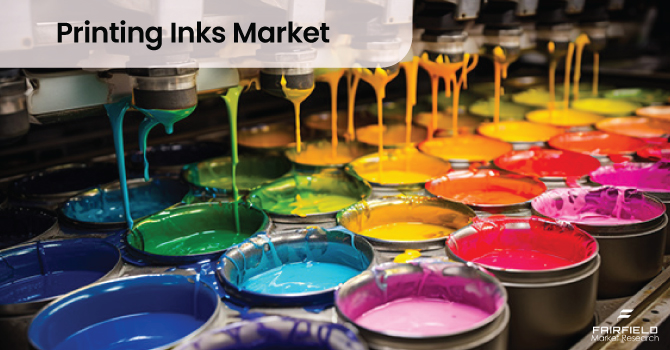
Printing inks, with their rich historical legacy, have evolved significantly over centuries, adapting to technological advancements and shifting consumer demands. From their early use in conveying information to their role in enhancing packaging aesthetics, printing inks are essential across various substrates such as aluminum cans, plastic bottles, and paper. This press release delves into the current trends, technological shifts, and environmental challenges within the printing inks industry.
For More Industry Insight: https://www.fairfieldmarketresearch.com/report/printing-inks-market
A Look at the Current Market Landscape
In 2018, global consumption of printing inks exceeded 3.5 million tons. The dominant technologies in the market include gravure, flexographic, and offset lithography, collectively accounting for over two-thirds of the total market. However, digital printing has emerged as the fastest-growing segment, driven by consumer demand for rapid, consistent color printing. The transition from analog to digital processes offers notable advantages, such as reduced costs and short-run capabilities, fueling this segment’s growth.
Asia Pacific: The Epicenter of Growth
The Asia Pacific region has become a pivotal player in the printing inks market, emerging as both a leading producer and consumer. Economic growth and rising population have significantly boosted demand for packaging and paper media in countries like India, Vietnam, Indonesia, and Malaysia. While gravure remains the dominant technology, flexography is gaining traction, particularly in paper carton applications. This dynamic growth is indicative of a broader trend towards increasing regional demand and technological diversification.
The Packaging Print Segment: An In-Demand Powerhouse
Packaging printing stands out as a key growth area, driven by evolving consumer demographics and urbanization. The shift towards packaged goods and sophisticated packaging solutions underscores the growing importance of this segment. Despite its prominence, packaging printing faces scrutiny due to environmental concerns associated with materials like plastics and metallized films. The industry is grappling with questions about the sustainability of its practices amidst increasing awareness of the environmental impact of packaging inks.
Green Printing: Paving the Way for Sustainability
The push towards eco-friendly practices has led to the development of green printing technologies. Traditional inks often rely on petroleum-based products, which can contain harmful chemicals. In response, manufacturers are exploring biomass solutions and bio-derived materials, such as soy and algae-based inks, to reduce environmental impact. Green printing practices emphasize renewable energy, reduced energy consumption, and the use of recycled materials, aligning with growing consumer and regulatory demands for sustainability.
Regulatory Challenges: Navigating a Complex Landscape
Regulatory compliance remains a significant challenge for ink manufacturers, particularly concerning food-contact inks. Stricter regulations in Europe and North America have restricted the use of substances like toluene and phthalates. Additionally, fluctuating raw material prices and shortages of key intermediates have compounded these challenges, leading to higher production costs and increased scrutiny over ingredient transparency.
Strategies for Success in a Competitive Market
Amid rising costs and intense competition, printing ink manufacturers are focusing on innovation and sustainability to maintain a competitive edge. The development of eco-friendly UV/EB products, bio-renewable inks, and water-based solutions is at the forefront of this strategy. For instance, in 2020, Flint Group introduced TerraCode, a range of water-based, bio-renewable inks and coatings designed for packaging applications. This product line highlights the industry’s commitment to sustainability and eco-friendly practices.
This post was created with our nice and easy submission form. Create your post!





